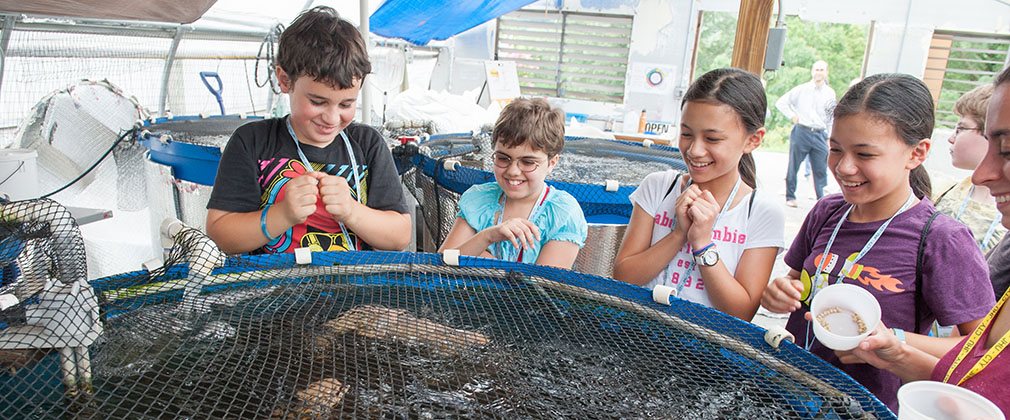The whole chain of events: CLF meets CTY
Last month the Center for a Livable Future partnered with the Johns Hopkins Center for Talented Youth (CTY) to host an exciting program at Cylburn Arboretum in Baltimore. The course is offered as part of CTY’s family academic series and provided an opportunity for fifth- through tenth-graders to learn about food system issues through hands-on activities. The 30 student participants, who spent the day exploring the U.S. food system through a public health lens, are among the most advanced learners in the country. They attended with their parents or guardians, who also benefited from the instruction.
Beginning the day with an activity that focused on food supply chains, participants explored where their food comes from, what is involved in producing it, and what the effects are—both positive and negative. Students and parents explored two of CLF’s projects in detail: the Maryland Food System Map project and the Aquaponics demonstration project. During the food system mapping session, participants used maps to address the question, “why do we eat what we eat?” and to explore how our environments shape our eating habits. The CTY participants also toured the CLF’s aquaponics system as an example of ecological agriculture, learning how the fish, plants and bacteria in the water work together to nurture each other. Students “got their hands wet” by testing the pH, nitrate, and general hardness levels of the water at various stations around the aquaponics facility and discussed the importance of maintaining water quality.
Throughout the day, students had the opportunity to work together with their parents and CLF staff to delve deeper into the course topics, and they added to their knowledge by watching the documentaries Out to Pasture and BFED: Baltimore Food Ecology Documentary.
At the end of the day, CLF staff asked participants to comment on the top take-home messages from the day. Here is a small sampling of the responses we received:
- “America needs to vote with their fork as well as make better food choices (regardless of income level)” – adult participant
- “Healthy food makes a healthy life!” – student participant
- “Our choices of food impact not just our health but also the environment in which we live” – adult participant
- “Use the earth wisely” – student participant
- “If we use the world to grow crops and breed healthy animals, we are using the world to our advantage and eating some healthy natural products” – student participant
- “The food options around us greatly impact what we eat. Costs and convenience do have an impact on our decisions” – student participant
- “Think about the whole chain of events that led to your food on your plate” – student participant
The Center for Talented Youth is another great partner of the Center for a Livable Future and we are thrilled to have had such a successful first collaboration. It was a wonderful opportunity to engage some of the country’s most talented youth in a day-long program focusing on the important issues we confront. We look forward to the next opportunity to introduce talented youth to our ongoing projects and research.
